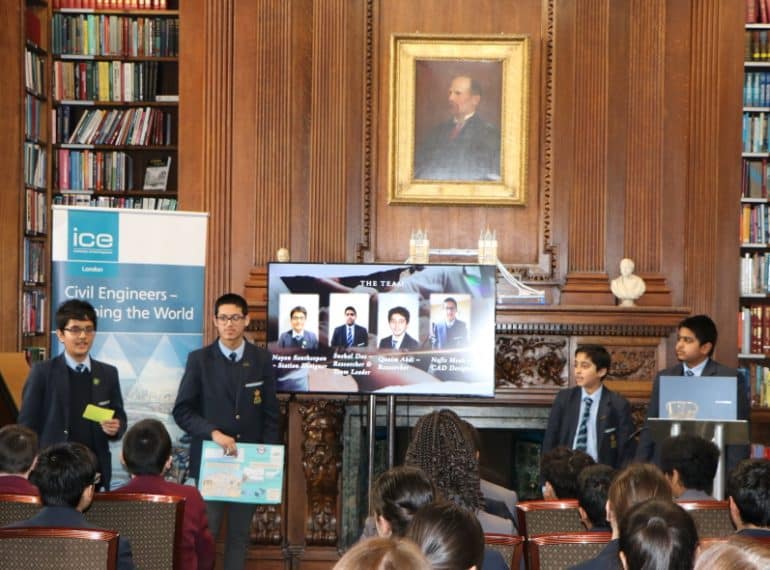
A QE team’s design for a new London railway station with a strong renewable energy focus has won them first prize in a competition run by the Institution of Civil Engineers.
 The four Year 8 boys included no fewer than four different ways of reducing carbon emissions in their design for the new station connecting the Isle of Dogs to the O2 Arena in Greenwich.
The four Year 8 boys included no fewer than four different ways of reducing carbon emissions in their design for the new station connecting the Isle of Dogs to the O2 Arena in Greenwich.
Headmaster Neil Enright said: “I congratulate these boys on a well-deserved success: they combined creativity with sound engineering instincts in their entry and came up with a design that clearly impressed the judges.”
Despite being among the younger competitors, team captain Snehal Das, along with Nafis Meah, Nayan Santheepan and Quaim Abdi, beat 26 other entries from schools across the capital to take the top prize in the I Can Engineer Awards, which were open to Years 8–10. Two other shortlisted QE teams also achieved success, with one picking up a further award and a third receiving a special commendation.
Taking advantage of the new station’s location next to the River Thames, the winning QE team included in their design an underwater turbine to harvest hydro-electric power. It also featured the use of kinetic power from customer footsteps, magnetic elevators, and bioluminescent bulbs. They called their design West Ferry Station.
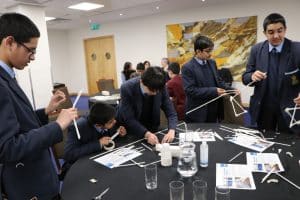 Jonathan Baggs, Director of ICE London, said that West Ferry was “very creative in its approach to energy generation and how it is used to operate the station”.
Jonathan Baggs, Director of ICE London, said that West Ferry was “very creative in its approach to energy generation and how it is used to operate the station”.
The winners’ prize is a behind-the-scenes tour of a civil engineering project, courtesy of civil engineering sector companies, SCS Railways and TYPSA, who supported the award category. Other companies supporting the awards, which were organised by the ICE London Graduates and Students Committee, were Mott MacDonald and Ramboll.
After the event, Snehal said: “Being the team captain gave me many new skills which could help me in my future life.”
Ten teams were shortlisted for the awards, including the three from QE. One Year 9 team, Colin Copcea, Ishaan Ganatra, Krishna Patel, and Rian Dharel, received the Community Award for their design, entitled Cubitt Waterside. It drew inspiration from the recently completed tube station, Nine Elms and Battersea Power Station. The special commendation went to a third team, drawn from Years 8 & 9 –Marvin To, Wilson Xu, and Zoheb Haq – who narrowly missed out on an award with their entry, Dockland Quay station.
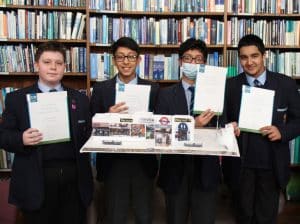 Kirsten Evans, a Technology technician and the organiser of the I Can Engineering Club at the School, congratulated all the boys who participated. “The club has allowed all 20 students involved to develop a better understanding of civil engineering’s role in society.”
Kirsten Evans, a Technology technician and the organiser of the I Can Engineering Club at the School, congratulated all the boys who participated. “The club has allowed all 20 students involved to develop a better understanding of civil engineering’s role in society.”
Miss Evans also thanked alumni who had supported the club by passing on their knowledge of civil engineering, including Karan Dewnani (OE 2006–2013).
The prizes were awarded in a ceremony at the ICE headquarters in Westminster – the first event for school pupils to be held there since the start of the pandemic.
In addition to the award presentations, there were team activities such as tower and bridge-building using spaghetti and marshmallows. The teams listened to a talk about HS2 from Fiona Hughes, a geotechnical engineer with Arup, and to an engineering ‘pitch’ from Julio Lacorzana, a Senior Engineer and Deputy Package Manager with TYPSA, who first spoke about his career journey.

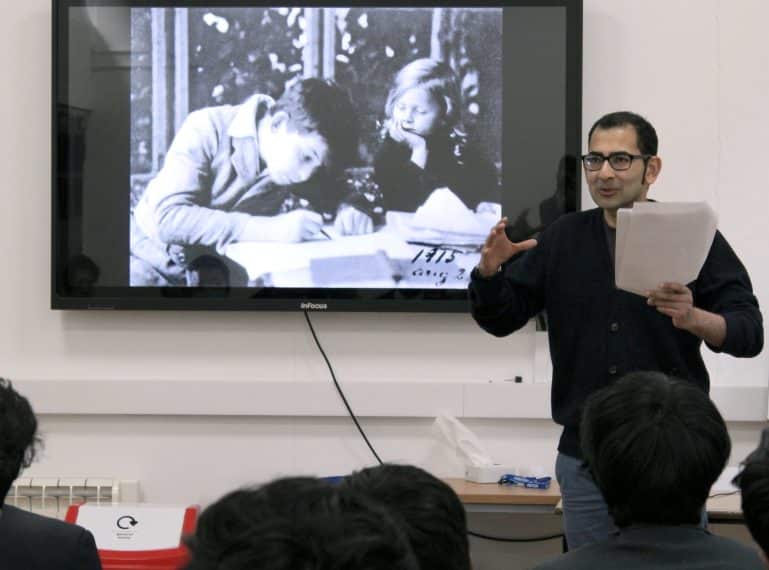
 Dr Bhattacharya’s book, entitled The Man from the Future: The Visionary Life of John von Neumann, was named a Financial Times and Times Literary Supplement Book of the Year in 2021.
Dr Bhattacharya’s book, entitled The Man from the Future: The Visionary Life of John von Neumann, was named a Financial Times and Times Literary Supplement Book of the Year in 2021.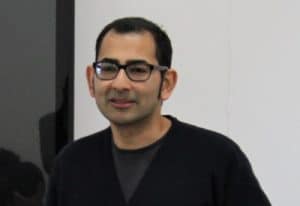 In his talk, Dr Bhattacharya mentioned the Manhattan Project as well as, inter alia, von Neumann’s contributions to set theory, game theory and the development of the first programmable digital computer.
In his talk, Dr Bhattacharya mentioned the Manhattan Project as well as, inter alia, von Neumann’s contributions to set theory, game theory and the development of the first programmable digital computer.
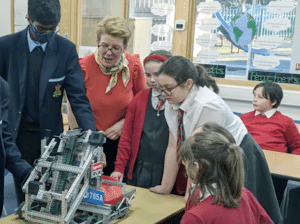 First, QE donated 3D printers to Northside Primary in North Finchley and Foulds School in Barnet, sending along a group of sixth-formers to help set the machines up and explain how they can be used.
First, QE donated 3D printers to Northside Primary in North Finchley and Foulds School in Barnet, sending along a group of sixth-formers to help set the machines up and explain how they can be used. Mr Noonan accompanied senior boys from Team Hybrid – one of four senior QE robotics teams to have taken part in last year’s international VEX robotics finals – to Monkton Hadley.
Mr Noonan accompanied senior boys from Team Hybrid – one of four senior QE robotics teams to have taken part in last year’s international VEX robotics finals – to Monkton Hadley.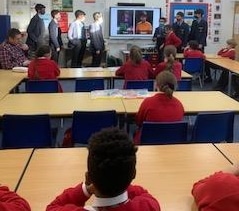 The children from Monken Hadley gave their own account in their school newsletter: “These robots were amazing…[The QE boys] play in many different competitions; the robot they are using…is so cool. It has a small conveyor belt, where rings go up, and it also collects big circles with poles on them.”
The children from Monken Hadley gave their own account in their school newsletter: “These robots were amazing…[The QE boys] play in many different competitions; the robot they are using…is so cool. It has a small conveyor belt, where rings go up, and it also collects big circles with poles on them.”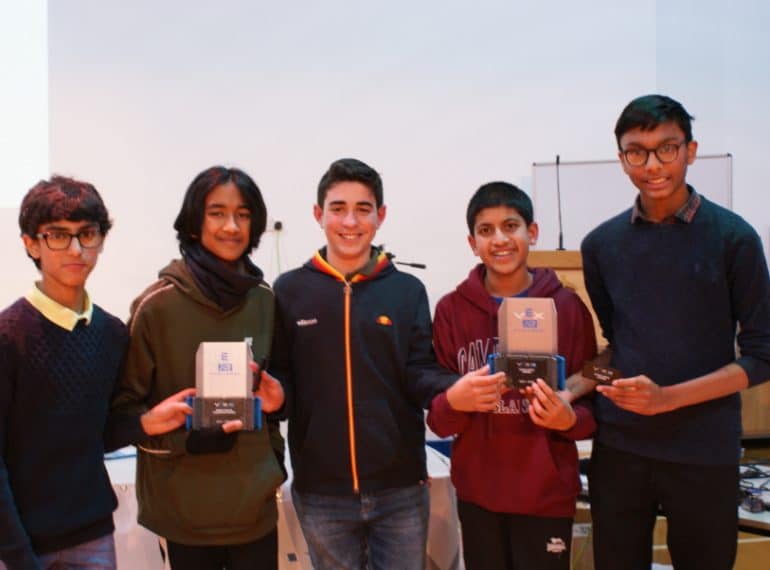
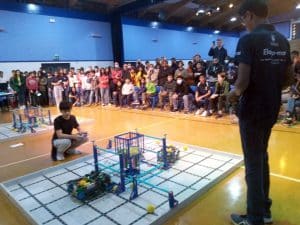 Thirty-two junior teams, including six from QE, took part in the North London Regional tournament, which QE hosted in the Shearly Hall.
Thirty-two junior teams, including six from QE, took part in the North London Regional tournament, which QE hosted in the Shearly Hall.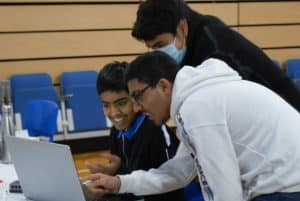 “However, it was a double alliance involving QE teams which pushed things forward in game 12 and 13. Firstly, a tournament high 78 being posted by a combination of QE newcomers Shattersquad and MTS Myopians, followed up by an even more impressive 83 posted by QE’s Year 9 Nova team and NUAST Triceratops. It was clear from this point on that the bar had been raised, with MTS Myopians in particular impressing. QE’s Gearsquad, Nova, and Cyberforce seemed to be battling it out behind them for the highest rankings spots, albeit the latter team were already securely qualified.
“However, it was a double alliance involving QE teams which pushed things forward in game 12 and 13. Firstly, a tournament high 78 being posted by a combination of QE newcomers Shattersquad and MTS Myopians, followed up by an even more impressive 83 posted by QE’s Year 9 Nova team and NUAST Triceratops. It was clear from this point on that the bar had been raised, with MTS Myopians in particular impressing. QE’s Gearsquad, Nova, and Cyberforce seemed to be battling it out behind them for the highest rankings spots, albeit the latter team were already securely qualified.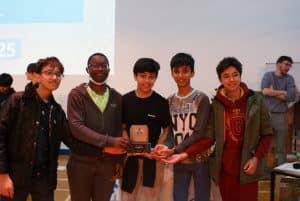 “In the end, it had appeared that Gearsquad had posted an unassailable score: a whopping 110 alongside the HBS Vextreme team. However, as was the case throughout the day, it was the pairing of Nova and MTS who would have the last laugh, and their incredible 125 score secured both teams their Tournament Champion title. The judges gave MTS X_O_Limit the Judges Award, and the Design Award was secured by HBS Spark.
“In the end, it had appeared that Gearsquad had posted an unassailable score: a whopping 110 alongside the HBS Vextreme team. However, as was the case throughout the day, it was the pairing of Nova and MTS who would have the last laugh, and their incredible 125 score secured both teams their Tournament Champion title. The judges gave MTS X_O_Limit the Judges Award, and the Design Award was secured by HBS Spark.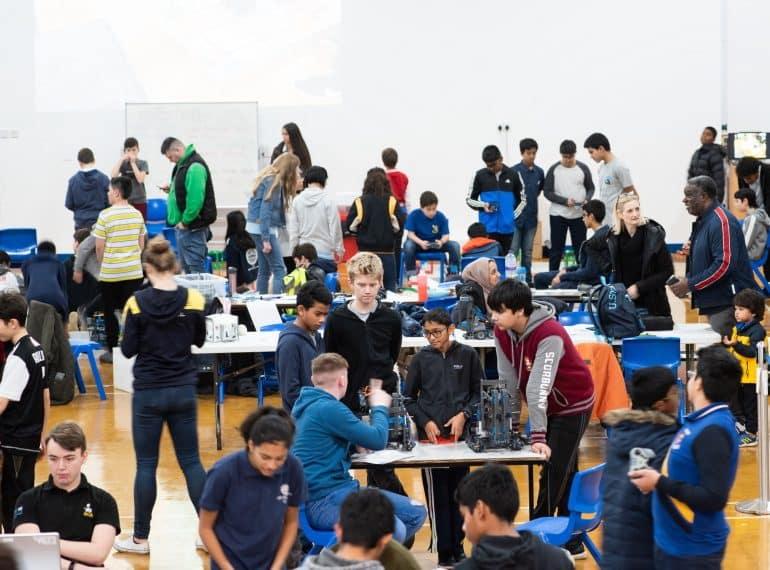
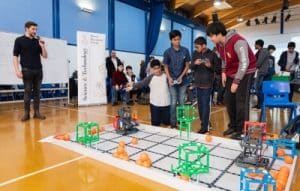 Head of Technology Michael Noonan said: “By the time they reached this competition, the boys definitely had the right mindset and the right strategy, having drawn on their past experience of robotics to develop a robot capable of taking on this season’s challenge. They handled the pressure on the day well and rightfully enjoyed the celebrations after their victory.”
Head of Technology Michael Noonan said: “By the time they reached this competition, the boys definitely had the right mindset and the right strategy, having drawn on their past experience of robotics to develop a robot capable of taking on this season’s challenge. They handled the pressure on the day well and rightfully enjoyed the celebrations after their victory.”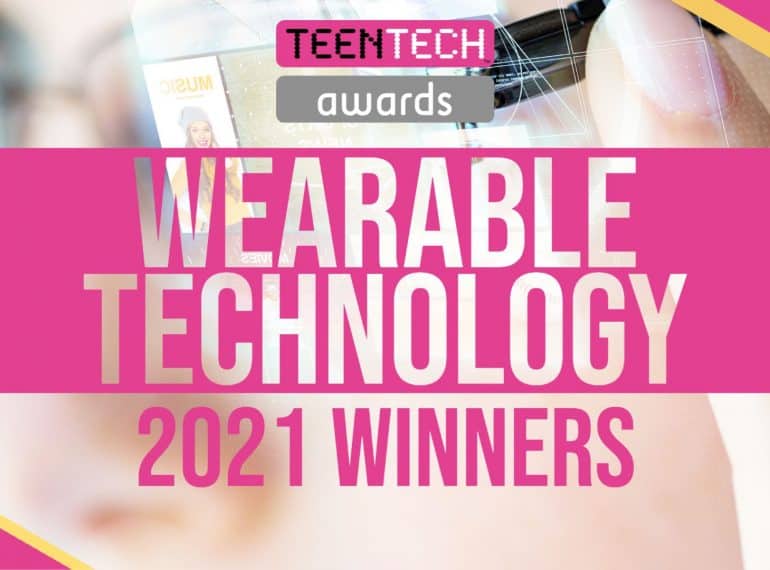
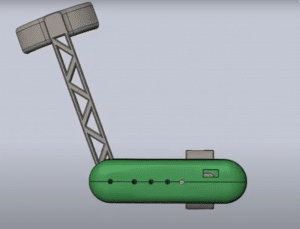 Anubhav Rathore and Heemy Kalam’s Flex-Charge – a device that harvests the energy of arm and leg movements to generate electricity – won the Wearable Technologies category of the 2021 TeenTech Awards.
Anubhav Rathore and Heemy Kalam’s Flex-Charge – a device that harvests the energy of arm and leg movements to generate electricity – won the Wearable Technologies category of the 2021 TeenTech Awards. The final was hosted by veteran technology reporter Maggie Philbin, CEO of the TeenTech educational charity, and included contributions from celebrities with ‘tech’ connections, including Professor Brian Cox, journalists Kate Russell and Rory Cellan-Jones, TV presenters LJ Rich and Dallas Campbell, Stephen McGann (Dr Turner in TV’s Call the Midwife), Dallas Campbell, and Dr Suzie Imber, Associate Professor in Space Physics at Leicester University.
The final was hosted by veteran technology reporter Maggie Philbin, CEO of the TeenTech educational charity, and included contributions from celebrities with ‘tech’ connections, including Professor Brian Cox, journalists Kate Russell and Rory Cellan-Jones, TV presenters LJ Rich and Dallas Campbell, Stephen McGann (Dr Turner in TV’s Call the Midwife), Dallas Campbell, and Dr Suzie Imber, Associate Professor in Space Physics at Leicester University.